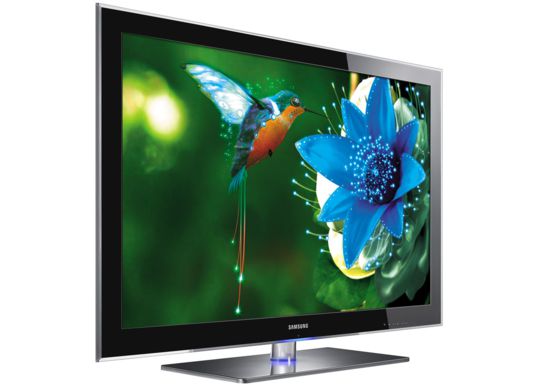Summer sales are great times to upgrade your home entertainment equipment, but don’t jump into the first discount bucket you find. Know in advance the type of television you want, what performance options that are important to you, what warranties you want and the cost range you can afford. Buying electronics equipment on time payments are not always the most affordable. 
Technology Parameters
Whether you want a standard-dimension television (SDTV) set or a high-definition television (HDTV) set, know the type of basic machine you want. Plasma, LCD and front- and rear-projection sets, for example, can utilize HD technology or not.
Plasma screens aren’t a new invention. A college professor invented the gas-based technology in the 1960s, but it wasn’t until relatively recently that television manufacturers became interested in it. When a plasma screen is off, the gases in it are dormant. Inject electricity into them, however, and the gases light up. The releasing of the light is very, very fast, so moving images don’t jerk—unless the set is breaking. With normal operation, plasma TV can present a very smooth picture that updates or refreshes often. One advantage to owning a plasma TV is that they are usually very thin: The layers of screen material needed to produce quality pictures aren’t based on tube size, and gases don’t need a lot of space. Even for the large screen models, the screen isn’t very thick, which enables thin television sets.
LCDs or Liquid Crystal Displays utilize the basic polarization technology that sunglasses offer: One layer is oriented on one axis. A second layer is oriented on an opposite axis. Lay the two together, and no light shines through. Adjust the orientation, and reduced levels of light shine through, and it’s that adjusted light level that lets you see while wearing shades. However, LCDs are similar to plasma technology in how it uses electricity to manipulate light through the medium—in this case, liquid crystals instead of gas. The electricity running through the crystals opens and closes, opens and closes those light-emerging twists. Some LCDs use the technology to present a black ground on which the color transmissions are displayed. The more completely black the background, the sharper your image. The drawback to LCD TVs starts when the set ages or the blackness is no longer as complete. White spots begin to show, whether consciously viewed or not, and users will notice reduced image quality. two advantages to this type, however, are that even reasonably priced models can present really decent pictures for a relatively long time, and they also come in slim models for easy placement.
Size and Space
For some, bigger is always better, but remember not only the dimensions of your room but the dimensions of the space the set will occupy in the room. Consider light patterns in the room as well. If you place your new set where the sun shines on it all day, be prepared to see a whole lot of glare and reflections from items behind you all over that wall-sized set.
Features and Combinations
Don’t pay for what you aren’t going to use. Unless you find a fantastic sale that gives you a gadget-filled combo set, don’t pay for an internal VCR if you don’t watch them. Don’t pay for high-definition technology in your set, simply because the set costs $150 less on sale than it does at regular price. If you don’t have a good selection of HD broadcasts, you really don’t need an HDTV set. You’ll be paying a higher price even on sale for technology that is advancing a lot more quickly than the life of your on-sale item. In other words, the model you buy today and don’t use for HD viewing will be outdated in a few years. Wait until availability broadens before you consider investing. The exception, of course, is when a discount offers a lower price than other, non-HDTV models. Then basic savings can drive that purchase with a clear conscience.
Post written by Sara Woods from Coupon Croc, the leader in money saving discounts, including the hottest electronics and TVs with a Debenhams discount voucher.










Comments